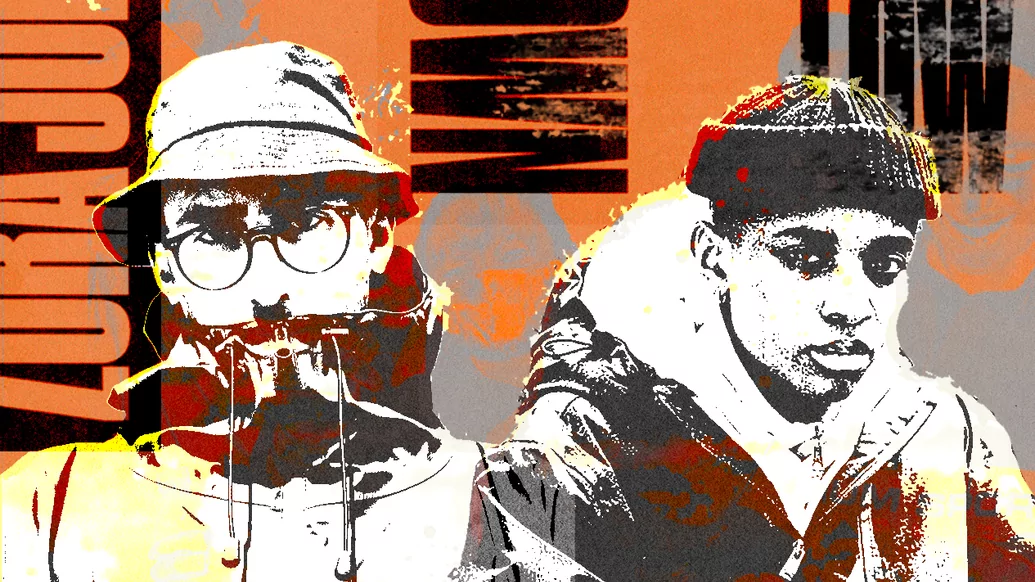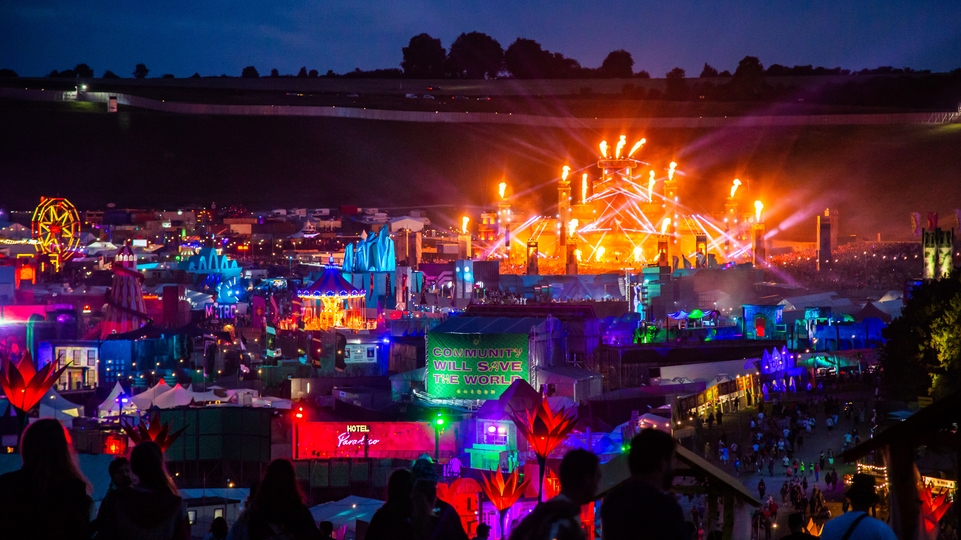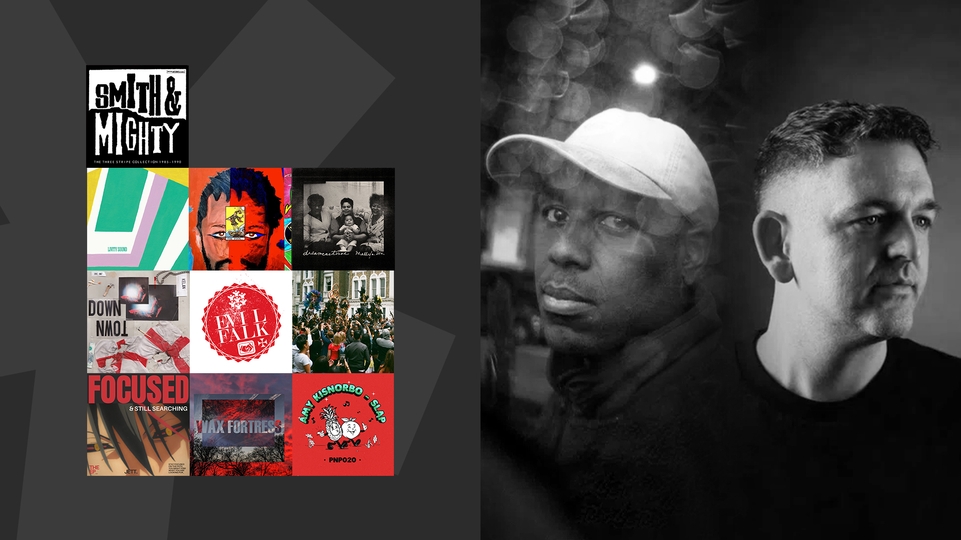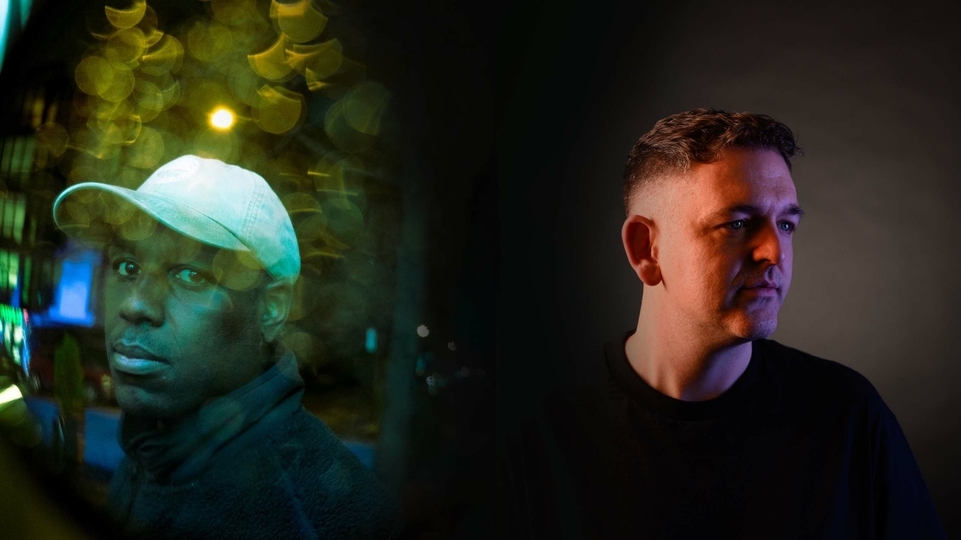
UK club music is evolving - but how?
As we enter a new decade, the ways in which we define electronic music styles are rapidly changing. Chal Ravens explores the etymological evolution of “UK club music” and speaks to some of its key players: about how regional roots are growing into digital ecosystems, and powering new conversations about globalisation in club culture
Bickering over genre definitions is a time-honoured tradition in dance music. One of the weirder etymological developments of recent years is the changing meaning of the word “club”. There’s the familiar noun, obviously: the place where we go to dance. There’s the verb: you club, I club, we all go clubbing. But as a genre? Well, there’s club music — and there’s club. (Already the word is becoming surreal, like words always do when you stare at them too long.) It’s a concept that’s worth unpacking: within those four letters is a modern story encompassing technology, race, class, and globalisation.
In the UK, a soundsystem culture stretching back to the Windrush generation has been the motor of dancefloor innovation for decades, audible in every major stylistic shift from jungle and rave through grime and dubstep. But in the last decade, many elements of that culture — particularly the underground ecosystem of pirate radio, dubplates, record shops, and raves — have faded away, usurped by digital technology.
In their place, club culture has moved online, drawing from scenes and styles around the world as it’s sucked into the fast-moving currents of global exchange. New genres are still emerging: not in a linear fashion, in the manner dubbed the hardcore continuum in the early ’00s, but through new, horizontal connections across geography and history, assisted by the internet’s ability to flatten time and space into an endless, hyperlinked soup. What’s coming out the other end right now is a sound that we seem to be calling “club”.
As a genre, club is both specific and vague. Club is not house or techno, though it might include elements of both. There might be breaks, but it’s not drum & bass. It’s intimately related to another vague non-genre, “bass”. The word club tries to capture the cross-pollination of previously hyperlocal sounds as they make their way across continents and back again, but in clumping those disparate sounds together, the cultural specificities that gave rise to each style can become blurred or forgotten.
Club isn’t a genre in itself, but if we try to imagine “UK club” as something distinct, it seems to be an outgrowth of soundsystem culture that looks sideways rather than forwards, listening out for shocking new sounds to splice into its vision.

There’s no single figure who represents the core of this concept. Instead, DJs and producers emerge from their own lineage (often a personal rather than societal or cultural set of influences) and find themselves in similar territory.
One emerging artist in the UK is the Italian-born DJ and producer TSVI. Along with fellow Italian artist Wallwork, he’s the co-founder of Nervous Horizon, a London-based label that releases drum-heavy club tracks by artists like Melbourne’s DJ Plead and Lithuania’s DJ JM, alongside locals like Lloyd SB and Second Storey.
As far as TSVI is concerned, the UK is “not at the centre of innovation anymore, like it was eight years ago,” when labels like Night Slugs and Hessle Audio were in the ascendant. These days he finds himself looking to China, Morocco, and South Africa for inspiration: scenes like gqom in Durban, North African artists like Deena Abdelwahed and ZULI, Shanghai avant-club label SVBKVLT, and the scene orbiting Nyege Nyege Tapes in Kampala.
TSVI may be right that the UK has stopped cooking up unique new dance genres (UK drill and Afropop are other forks in the road for another conversation), but while the days of discovering a whole new sound in an East London basement seem long gone, it’s not the end of innovation. Scratcha DVA is putting a UK spin on South African gqom and Sherelle is fusing jungle and footwork at 160BPM.
Nervous Horizon’s latest compilation contains almost no UK artists — yet sounds obviously right for the dancefloors of London. In Bristol, experimental bass-techno continues to emanate from established post-dubstep outlets like Livity Sound and Tectonic, while Batu’s Timedance has established itself as one of the city’s most forward-thinking labels, home to critical favourites like Laksa, Ploy, and Bruce.
Manchester is arguably the current hub of whatever “UK club” might be, though. It’s a city large enough to support a diverse scene but small enough to feel intimate and community-focused. The Swing Ting crew are pushing everything from modern dancehall to Brooklyn-bred FDM and new spins on garage and grime through their long-running party and label. NTS Radio regular Aya channels the madcap intensity of IDM and rave into her club creations.
Finn finds connections between Jersey club, ghettotech, and French filter house to create his signature brand of #fastmusic in the 130-140BPM range. There’s also the ongoing influence of Manchester-based online music shop Boomkat, which has been pointing the way towards a more eclectic, experimental, and globally-informed club sound for years.
Check into a DJ set by any of the aforementioned artists — or other talents like Tash LC, object blue, or India Jordan — and you never quite know what you’re going to hear. It could be complex syncopation or heavy triplets — or just banging four-on-the-floor kicks. Pop and R&B vocals sent through a blender, or harsh percussion clusters catching you off-guard.
It’s more about the mood, ultimately: vibrant, kinetic, unpredictable. In fact, club is probably best understood as a style of DJing rather than production, a sound invented in real time. The element of surprise is highly valued, along with quirky edits, bizarre blends, and a fearless approach to clashing musical keys. You might hear a spinback or three. It’s music to stay on top of rather than music to get lost in.
Looking back on the evolution of this style, Finn, Sherelle, and TSVI all credit Night Slugs as a chief influence on the current wave of club music, both inside the UK and out. Artists like Bok Bok, Jam City, L-Vis 1990, and Atlanta-based Helix integrated sounds from both sides of the pond, combining the spartan aggression of grime with the jackhammer rhythms of Jersey and Baltimore.
The Club Constructions series, launched in 2014, laid out strict rules of engagement to those keen to submit demos to the label: raw, stripped back tracks, with no melodies, short reverbs, and no “emotive artefacts”.
Ironically enough, the Club Constructions series had an undeniable impact on what ended up being called deconstructed club music, along with early grime instrumentals like Wiley’s drum-free “devil mixes”. TSVI also namechecks Night Slugs artist Egyptrixx and his 2011 album ‘Bible Eyes’ as a prototype for the deconstructed sound, “taking elements from various genres, but taking them out of context.”


The label’s lurid and percussion-heavy sound was also a huge influence on a new generation of UK producers, who felt more in tune with their virtual community of SoundCloud-boosted bedroom producers than the fusty-seeming legacy of the hardcore continuum. Her Records, launched by Miss Modular (later MM) and Sudanim (later Suda) in 2012, spent five fruitful years exploring the euphoric possibilities of 8-bar grime, ballroom, and Jersey club.
In the end, the deconstructed club movement — with its abrasive textures and non-linear arrangements, as exemplified by DJs like Kablam and Ziúr — didn’t entirely catch on in the UK. The needs of the dancefloor always seemed to take priority. The Nervous Horizon crew never fully got into it, says TSVI, “maybe because we come from Italy and we like everything more direct and consistent.”
Hyperdub affiliate Shannen S-P, who has referred to her own style as “Afrocentric techno”, echoes that sentiment in her recent DJ Mag profile. While the deconstructed club moment was instrumental in making people of colour and queer people more visible as DJs and producers, she lost interest when the music “tipped into IDM territory,” she notes: “I don’t want to go out on a Friday or Saturday night and not be able to dance.”
The self-consciously experimental nature of deconstructed club (sometimes accompanied by liner notes dense with jargon and critical theory) often felt too distant from the immediate needs of the club and the hedonistic impulses of the average UK dancefloor. In hindsight it was an explosive moment; we’re still absorbing the shocks of that initial wave of deconstruction. But alongside that extremely online wave of innovation, certain IRL happenings proved equally as influential on the development of a UK sound.
At Boxed in London, which launched in 2014, Mr. Mitch, Slackk and Oil Gang devised fresh takes on the grime instrumental, playing up the sound’s Technicolor vivacity and all-round OTT attitude while mixing into more obviously club-functional tracks.
The long-running night remains an important influence on UK club music in 2020, having helped launch the careers of many DJs whose roots are in grime but who’ve gone on to play techno, dancehall, electro, power ambient, pop, and more, including Finn, Tarquin, Logos and Sim Hutchins.
More recently, UK club has absorbed the percussion-heavy menace of gqom, which was picked up by Boxed affiliate Moleskin for the Goon Club Allstars label back in 2015. The gqom sound slotted in perfectly with an ongoing reboot of UK funky, with labels like Nervous Horizon purposely exploring funky’s intricate, hard-hitting rhythms and splicing them with ballroom, techno, and gqom.
Similarly, Scratcha DVA has been carrying out a systematic investigation of gqom’s applications, crafting his own signature “UKgqom” tracks and, just this month, releasing an EP of stripped back blends of gqom and R&B. And alongside the recognisable building blocks of the South African sound (menacing bass drones, syncopated percussion) there’s been no ignoring the solid thwack of Middle Eastern drumming in recent UK club hits like TSVI’s ‘Whirl’ and DJ Plead’s ‘Baharat’, both on Nervous Horizon.
In the last five years, the UK underground has also been heavily fuelled by alternative takes on the mainstream fascination with dancehall. Jamaican crew Equiknoxx were a key inspiration, having found a second home in the UK with releases on Swing Ting and Demdike Stare’s DDS label.
DJs like Tash LC, Mina and Hipsters Don’t Dance mixed soca, dancehall, and Afropop to perfection and Manchester’s Murlo booked Stylo G at his club night. Gloomy London duo Raime dropped a mixtape of their own dancehall versions. Orlando produced dreamy pop riddims with Jamaican MCs, and Mr. Mitch carved out his own “techno dancehall” sound over two mixes for Rinse.
Other musical lineages haven’t made such headway in the UK. The Latin sounds of cumbia, tribal, and reggaeton have remained marginal compared to their impact on US club music. African styles from Francophone countries, like coupé décalé from Ivory Coast, have had more impact on the Parisian underground than the club scene over the Channel. Colonial history continues to shape our inheritance.
The UK remains, as it has been for decades, a musical melting pot. Nervous Horizon is “receptive to these kinds of regional scenes happening all over the world,” says TSVI, “and we try to give them our own interpretation.” TSVI cites Missdevana’s twist on Dutch bubbling and DJ Plead’s combination of Hessle Audio-influenced bass architecture and sounds from his Lebanese heritage.


Local Action is another London label drawing attention to these feedback loops, following up various Jersey-inspired releases in its catalogue with an album of greatest hits by Jersey club original DJ Jayhood. On the dancefloor, the UK spin on the fusionist aesthetic of “club” tends towards the crowd-pleasing, often working with the theatrical elements of sound system culture: multiple spinbacks, mad edits nodding to the silliness of hardcore rave, a tendency towards “woiii” and gunfingers as an audience reaction.
It’s weird, then, that a lot of the artists who best exemplify this sound are rarely spotted at big festivals in the UK or Europe. The likes of Mr. Mitch, Anz, or India Jordan can easily conquer any summertime dancefloor — and then there’s someone like Sherelle, who seems to be having so much fun in the booth that she brings a rare element of watchability.
Why aren’t these UK club DJs appearing on European festival lineups? “If I knew I’d be playing more festivals,” says Finn, who wonders if there’s a basic mismatch in attitudes and expectations. “There’s not much room for humour in dance music. It all feels like it has to be quite serious,” he says.
“Look at what Berlin did to techno that came out of Detroit. You listen to Underground Resistance records and they’re full of character — some of it is even silly, even though UR has a serious mission. Exactly the same thing happened with [US regional] club music when it came to Europe — you lost all the voices of Jersey club, people like UNIIQU3 and Jayhood.”
US club music certainly has a sense of humour; it also tends towards a deranged attitude to composition, throwing any kind of sample into a blender at high speed. As a cultural phenomenon, a genre like Jersey club is far removed from any kind of mainstream European rave culture; it’s made for and by young black kids, often teenagers throwing parties in their high school gymnasiums.
When labels outside that culture started picking up on the sound and cherry-picking specific elements for their own productions – often prioritising the music over the vocals — a certain element of that culture was smudged out. When we mix it all up and call it club, says Finn, “we end up referring to anything that could be played in a club, rather than these actual scenes that are the source of the music.”
In the process of absorbing and reframing various black genres, the term “club” obscures the roots of its own diversity. That shouldn’t write off its utility as a catch-all term; how else might we capture the contemporary intermingling of dozens of related global scenes? But intersecting factors of race and class are always at work in the creation and adoption of new styles.
This is particularly obvious at the edges of the mainstream. Big dance festivals continue to focus on house and techno, genres now dominated by white European artists and perceived in some sense as “gentrified”; the so-framed mature older siblings of rowdy kids like drum and bass, footwork, Jersey club, grime, and contemporary imports from local scenes around the world.
Those scenes are also younger, blacker and poorer on average. There’s an absurd feedback loop at play in which promoters excuse pedestrian bookings by citing commercial imperatives, which does audiences a disservice by suggesting that they’re too bigoted or unimaginative to branch out from house and techno. But insofar as club music is thriving in small clubs and basement parties in the UK, the next challenge will be to establish the current generation as an internationally recognised creative powerhouse.
Sherelle is still riding high off her 2019 Boiler Room set, which became infamous for an unsolicited spinback. The set has had nearly 300,000 views — massive for a relative newcomer. The Reprezent DJ is clear that she wouldn’t be getting so many bookings without the fluke of that viral Boiler Room, explaining that the music she plays is often unfamiliar to mainstream promoters. “I’m sure a lot of them have had to type in ‘footwork’ in order to identify [my] tunes,” she says.
But at the beginning of a new decade, Sherelle is “hella positive” about her scene. She's just launched a label with Naina, Hooversound Recordings, and points to the rise of DJs like L U C Y, Jossy Mitsu, and Tygapaw as a handful of young UK club artists — many of them women — who are setting the agenda. She thinks people are “tired of the same nights, the same DJs over and over,” with audiences increasingly drawn to smaller clubs where top-earning DJs would never play.
“I’m more than happy to play in a dive. That’s the difference between [those DJs and] a club DJ,” she points out. She’s also optimistic about crowds coming round to harder, faster, weirder music, noticing that “loads of people have been introducing footwork and 160 [BPM] in the last part of their sets. Everybody’s coming together.” Genres come and go, but maybe the beauty of “club” is its flexibility.
The UK continues to be a crucible for new sounds, with artists in Bristol, Manchester and London always searching for fresh influences from around the world. But the idea of “UK club” as a genre is just as much of a paradox as any hyperspecific, homegrown genre of the past 20 or 30 years; a term that attempts to capture the contemporary feedback loops of past and future, local and global, online and IRL. More than a sound, it represents a lineage, an attitude, and a community — one that’s nowhere near out of energy and ideas.






